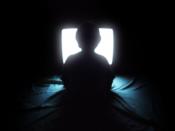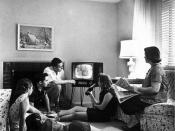The setting for my first four years of teaching was a school of 1,400 students in the inner city of Oakland, California. One of the many challenges I faced as one of the eight kindergarten teachers on staff was attempting to curb the violent and aggressive behavior of my students. During my first year of teaching, a kindergartner from another classroom shot his younger brother three times in the stomach. The following year a first grader was suspended for bringing a knife to school and using it to threaten children on the playground. Not only were these children violent, but they understood the language of violence. Students with underdeveloped oral language skills nonetheless could interpret the gangsta rap which bellowed from the cars that slowly drove by during recess. Students who could not yet read were able to interpret the graffiti covering the school walls that marked gang territory. My students lived in a violent world.
I invested a great deal of time learning about how to combat this violence by teaching conflict resolution skills to my students. We practiced using our words instead of our fists, with some positive results. I soon realized that these nonviolent messages were in direct conflict with the lessons being taught by another influential teacher in my students' lives -- television. Although my students were improving and beginning to solve interpersonal conflicts with less violence, they spent recess pretending to be Ninja Turtles and Power Rangers.
I determined that television programs served as a springboard for violent and aggressive recess behavior. I soon adopted a "no tolerance" policy about "pretend violence" which I believed often lead to the real thing: No pretend shooting, no pretend kicking, no Power Rangers, no using legos or clay to make weapons. Although the students' social skills...


